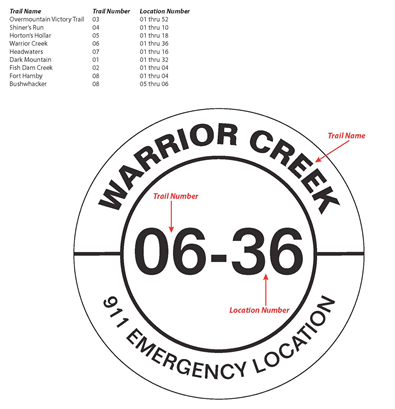If you have a Good Enough to Share submission, please email it to CorpsLakes@usace.army.mil
Carrying Capacity
Bryson, B. F. (2005), A Review of Carrying Capacity and a Field Study of Park Managers' Techniques to Minimize the Impacts of Recreation Use and Overuse on Soils Resources - This paper contains information on trails management by various agencies and many photos of trails construction and maintenance techniques. See page 3 for the Table of Contents, and page 4 for a List of Figures with links to photos within the document.
Mountain Home Project Office, Little Rock District
Developed scopes of work for trail construction and maintenance, and has adapted (with permission) drawings from Arkansas State Parks that illustrate trail dimensions, clearing limits, and cross sections.
Partners in Action - Creating and Improving Trails
Trail Emergency Markers
Trail Emergency Marker signs were installed every ¼ mile. The trails were designated by a Trail Number and at each ¼ mile we gave the trail a Location Number. These numbers were put onto a map that was given to local fire departments, rescue squad, and local communication center (aka 911 phone number). The map showed access locations to be taken to get people off the trail utilizing the easiest path which could possibly be from the water.

Elm Fork Project Office, Ft. Worth District
The Elm Fork Project boasts over 30 miles of heavily used hiking, biking and horse trails with more being requested all the time. A Challenge Agreement with the neighboring cities is being used to help develop and maintain the trails. In most cases, the Corps supports the bulk of trail construction through volunteers and contracts. The cities are then responsible for the maintenance of the trail within their city limits in accordance with the trail standards developed by the challenge partners, found in the Project Plan.
Volunteer GETS page
Sample Job and Activity Hazard Analysis for trail work, and trail volunteer position description





